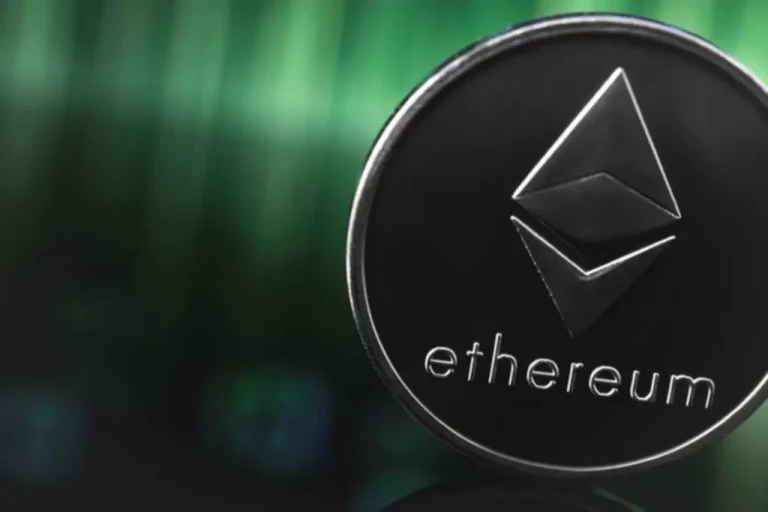As the number of bitcoin miners grows, the difficulty of the cryptographic calculations increases, requiring more processing power. This results in bitcoin consuming massive volumes of electricity. Blockchain networks like ethereum or bitcoin do not require an intermediary to process transactions, unlike the traditional system that uses banks as intermediaries to facilitate transactions. Each node runs the Ethereum client software, which communicates with other nodes in the network. They listen for transactions, execute them, and implement the Proof of Stake consensus algorithm to validate transactions and blocks. The Bitcoin blockchain was designed to serve the needs of the Bitcoin cryptocurrency.

The Ethereum community is actively working on upgrades and innovations to address the challenges faced by both Layer 1 and Layer 2. With the anticipated danksharding upgrade and ongoing efforts to decentralize Layer 2 solutions, the future looks promising. As these layers continue to evolve, they will play a pivotal role in shaping the future of DeFi and the broader crypto landscape. TRON cryptocurrency founder Justin Sun and Ethereum miner Chandler Guo are among the prominent supporters of an EthereumPOW hard fork.
At first glance, it may seem as though all cryptocurrencies are essentially the same. The time of the Ethereum block or transaction speed is only seconds. Bitcoin appears to have the edge over Ethereum on the fact that it is seen to be a more stable Altcoin. That said investors are increasingly using it to gain exposure into the booming industry as it is seen to have high prospects of success. Bitcoin vs. Ethereum on the investment point of view is a battle that is slowly taking shape as investors continue to speculate on which of the two is likely to generate more returns in the long term. They are both decentralized tokens operating on a transparent public ledger.
In 2014, Ethereum launched a presale for ether, which received an overwhelming response. In the early days of Bitcoin, validators were largely amateur hobbyists. Still, as the math problems in the Bitcoin proof-of-work system have become more challenging, the amount of processing power needed to solve each one has increased exponentially. Bitcoin mining is largely handled by specialized companies who can afford the expensive bitcoin mining rigs and the energy needed to run them. Knowing what is a token vs a coin can be important when deciding which cryptocurrencies to use or invest in.
And third, as more people utilize Ethereum distributed apps, demand for ETH may increase,” he says. Bitcoin and Ethereum are systems, whereas bitcoin (lower case b) and Ether are the cryptocurrencies used by those systems. When comparing the two ecosystems, we need to be clear whether we’re comparing the technology, the assets or both. Bitcoin and Ethereum are systems, whereas bitcoin (lower case b) and Ether are the cryptocurrencies used by those systems.
With a shift towards Proof of Stake, Ethereum will only become more decentralized as everyday users will be responsible for the security of the network with staking pools. One other point worth noting is that Ethereum once underwent a hard fork, which resulted in the creation of Ethereum Classic (ETC). This was due to the infamous DAO hack, which saw $50 million stolen. Ethereum developers decided to revert the chain prior to the attack, but some Ethereum enthusiasts chided the mutability, which led to the creation of ETC.
This remained unchanged until September of 2022 when the Ethereum network completed the significant transition to a “proof of stake” (PoS) consensus mechanism. The Bitcoin blockchain operates a PoW consensus algorithm, in which miners verify transactions and add them to the chain in new blocks by solving cryptographic calculations. Miners receive bitcoins as a reward for their work at a rate that reduces by half every four years in a process known as “halving”.

Web3 native public goods funding platforms such as Gitcoin(opens in a new tab) run climate rounds to stimulate environmentally conscious building on Ethereum’s application layer. Through the development of these initiatives (and others, e.g. DeSci), Ethereum is becoming an environmentally and socially net-positive technology. Both Bitcoin and Ethereum have healthy developer counts and activity, but Ethereum is the clear winner here. Ethereum has far more developers than Bitcoin, because of what smart contracts allow one to do.
- Ethereum was intended as a platform to facilitate immutable, programmatic contracts and applications via a global virtual machine.
- Bitcoin was envisaged as a means of avoiding many of the problems inherent in the modern system of money, such as the concentration of power into the hands of middlemen.
- Bitcoin vs. Ethereum on the investment point of view is a battle that is slowly taking shape as investors continue to speculate on which of the two is likely to generate more returns in the long term.
- This is important because the chain’s length helps the network follow the correct fork of the blockchain.
- Ethereum does not compete directly with Bitcoin, as the Ethereum blockchain is a smart contract enabled platform while Bitcoin is focused on providing a means of processing decentralised digital payments.
But its high price volatility against fiat currencies has attracted investors using it as a form of “digital gold” to diversify their portfolios and traders looking to speculate on price swings. As cryptocurrencies, Bitcoin and Ethereum are in many ways similar. They are both useful as a medium of exchange and a store of value to varying degrees. ethereum vs bitcoin The network is kept secure by the fact that you’d need 51% of the network’s computing power to defraud the chain. This would require such huge investments in equipment and energy; you’re likely to spend more than you’d gain. The energy consumption estimate for Ethereum comes from a CCRI (Crypto Carbon Ratings Institute)(opens in a new tab) study.
But their pet projects risk repeating the region’s long history of corporate colonialism. There is no technical obstacle to making the notoriously energy-hungry cryptocurrency far more efficient—just a social one. A major criticism of proof-of-work is the amount of energy output required to keep the network safe. To maintain security and decentralization, Ethereum on proof-of-work consumed large amounts of energy. Shortly before switching to proof-of-stake, Ethereum miners were collectively consuming about 70 TWh/yr (about the same as the Czech Republic – according to digiconomist(opens in a new tab) on 18-July-2022). Once generated, this was incredibly easy for other miners and clients to verify.
Anyone getting into the crypto markets as a newbie has likely heard of ETH, so may be compelled to buy it. The Ethereum network offers very fast transaction processing speeds https://www.xcritical.in/ compared to many other cryptocurrencies. The token’s recent shift from the proof-of-work mechanism to proof of stake has attracted more users and increased its demand.
The topic attracts nuanced debate(opens in a new tab), not only about the amount of energy consumed, but also about the sources of that energy and the related ethics. Energy consumption does not necessarily map precisely to environmental footprint because different projects might use different energy sources, including a lesser or greater proportion of renewables. Ethereum’s route to sustainability was to replace the energy-hungry part of the network with a green alternative.
The impetus for a decentralised currency that could not be manipulated by governments or large financial institutions came out of the 2008 global financial crisis. Because Ethereum is a distributed computing platform with finite computational resources, there must be a way to allocate and limit their use. Gas is a measure of computational effort, and gas fees pay for the computation a transaction requires. Smart contracts—and therefore dApps—consume gas when they run and are charged an amount consonant with the resources they use.
